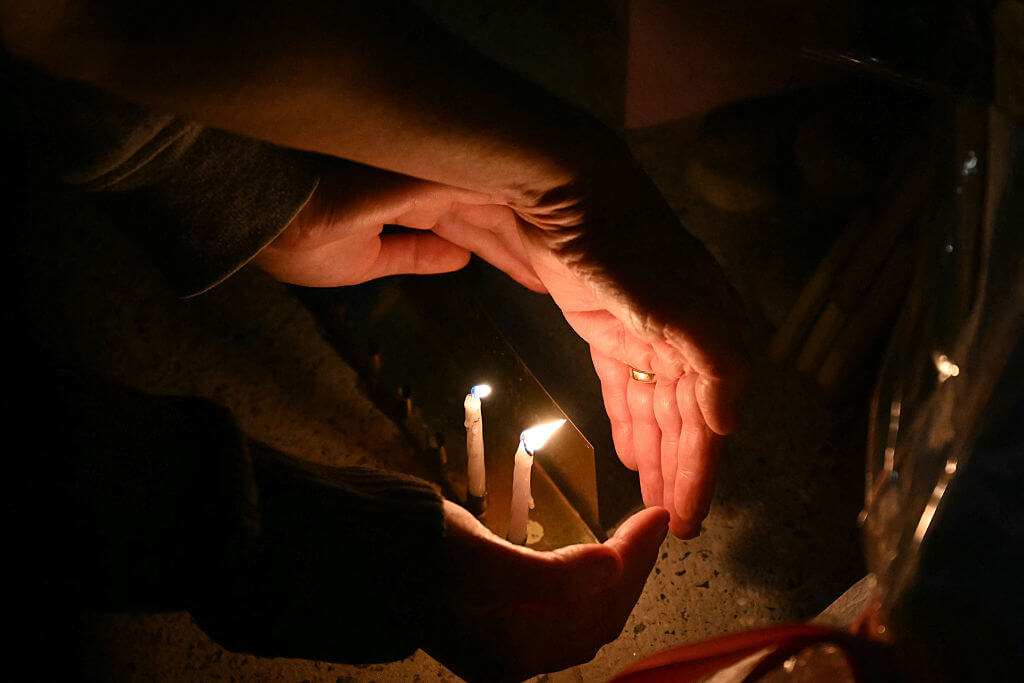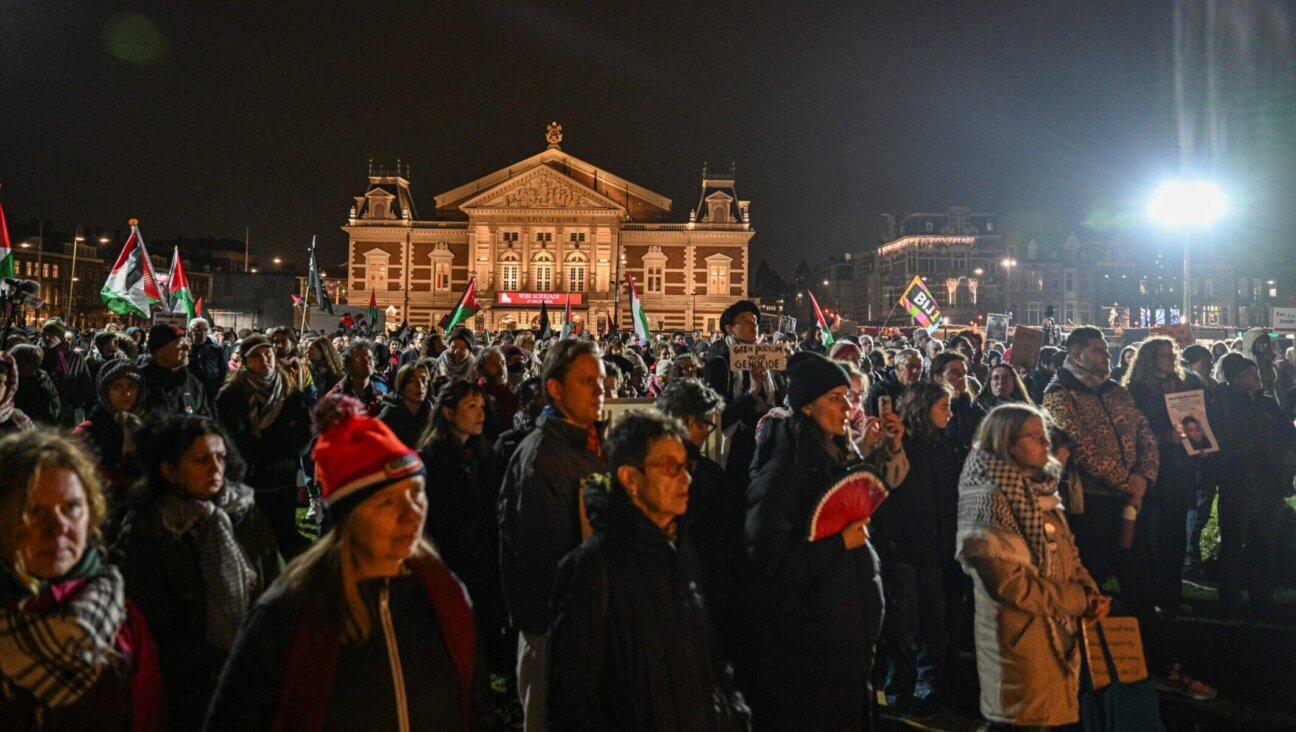Babka: Fuel for the Jewish Food Movement

Graphic by Angelie Zaslavsky
As a participant at the 5th annual Hazon Food Conference in Sonoma, CA I was set to learn about the current state of the Jewish food movement. I was ready for the conversations about raw vegan fare, workshops on organic produce, and sessions on new urban farming techniques.
But as I looked at the first item on the schedule, there it was. Babka. Front and center as one of the opening sessions offered at the conference. Why babka? Why here? Why now?
In a way, it felt like a step backwards to me. A loaf of refined sugar, white flour, and enough butter to even make Paula Dean blush. It’s definitely not your typical eco-friendly treat.
Most of the participants seemed to flock to the session for one reason. Arieh Scharnberg stated without hesitation: “I came for the chocolate.” According to Calya Neipris, “It’s chocolate and dough. What could be bad?”
Emily Barton, the session’s leader and graduate of the Culinary Institute of America, took a different perspective. “I’m baking babka because I like Jewish traditional food and I believe we need to make it. If we don’t know how to make our traditional foods, then who will when we are gone? It is mostly grandmas who make babka now and there are a lot of people in our generation who don’t.”
Barton taught that babka, as we know it, was first made in the 19th century. Literally meaning “grandmother” in Polish, babka was originally baked in a “Turk’s Head Pan,” a tube pan with high sides and a scalloped edge. The cake was said to remind people of their grandmothers’ skirts and in it’s original form it was “stout and round, just like our grandmothers,” Barton said.
Babka was most likely invented when Jewish housewives took extra challah dough rolled it out and then, with a stroke of genius, filled it with jam or cinnamon. In addition to its appearance on the Sabbath table, babka became a popular item for the break fast on Yom Kippur and joyous celebrations.
As my fellow babka bakers and I knocked rolling pins, we reminisced about the favorite dishes our bubbe’s made. Here we were, food system change makers, getting excited about foods like knishes and kreplach and the love our grandmothers baked inside.
Babka is more than a sugar rush; it is an edible vehicle to our food foundations and the invigorating energy we gain from them. Returning to our culinary roots gives us fuel to move forward, and make change in our world. Delicious, sweet, buttery, fuel.
Babka with Chocolate Filling Recipe courtesy of Emily Barton
Makes 2 large loaves
Dough:
2 1/4 teaspoon (1 envelope) dry yeast (you can use either “active dry” or “instant,” the only difference is that “instant” will rise faster)
1/3 cup plus 1 teaspoon granulated sugar
1/2 cup warm milk
1/4 pound (1/2 cup or 1 stick) butter, preferably unsalted, softened
1/2 teaspoon salt
2 eggs at room temperature
1/2 cup sour cream
3 to 3 1/2 cups all-purpose flour
1) In a small bowl, stir the yeast, milk and 1 tsp. of the sugar. Set aside until foamy, about 10 minutes.
2) Meanwhile, in a large bowl, mix the butter with the rest of the sugar and the salt until creamy. This can easily be done with your hands, but if you like, you can do this and the next few steps in a standing mixer.
3) Add the eggs one at a time, followed by the sour cream and yeast mixture. The mixture at this point will look slightly “curdled” and not homogeneous or smooth. That is okay!
4) Add flour by the cup until the dough starts to come together in a ball. The dough should not be sticky, and should feel silky and smooth but firm, like a baby’s bottom. Turn the dough out onto the table and knead briefly until dough is smooth but firm.
5) Wash out the bowl, spray it with cooking spray or grease it with butter, and put your dough back in it. Place a piece of plastic wrap directly over the dough and set in a warm place to double in bulk, about an hour. Or, refrigerate it overnight. If you do refrigerate it overnight, let sit at room temperature for an hour to warm up before shaping.
Note: Under a time crunch? You can use a warm oven to move your dough along. When you are getting your yeast mixture together, set your oven to 200 degrees F. When the oven has pre-heated, turn it off. Place your bowl of dough in the warm oven and shut the door. This should take about 15 minutes off your rise time.
Chocolate Filling:
2 pounds semi-sweet chocolate (Nestle morsels are just fine, but splurge if you want), chopped finely (use a food processor if you’ve got it)
2 tablespoons cinnamon (optional)
2/3 cup granulated sugar
1 1/4 sticks butter, softened
1) In a medium bowl, mix together the chocolate, cinnamon and sugar.
2) Using your hands, mix the butter into the chocolate-sugar mixture, until it comes together. Warning: Your hands may get very chocolatey! If you don’t want them to get messy, you can use a spoon.
Streusel Topping:
1 2/3 cups powdered sugar
1 1/3 cups all purpose flour
1 1/2 sticks unsalted butter
1) In a large bowl, combine sugar, flour, and butter. Using a fork or your hands, mix until fully combined with clumps ranging in size from crumbs to 1 inch. You probably won’t need this much topping, but it also freezes well.
Shaping and baking:
1) When the dough has doubled in bulk, punch it down, remove it from the bowl onto a floured surface, and divide it in half. Cover one of the halves with plastic wrap. Butter your loaf pans and have them ready to go.
2) Roll the first half out into a large rectangle-like shape (it doesn’t have to be perfect, you’re going to roll it up), about a quarter-inch thick. If the dough starts to stick to the table or the rolling pin, just sprinkle some more flour on top of or under the dough.
3) Take half of the chocolate mixture and spread it evenly over the dough, leaving about a 1/4-inch border all the way around.
4) From the end of the rectangle closest to you, roll the dough up, as tightly as you can (this is what will give you layers).
5) When you have a log, bring the two ends together and then twist the dough on top of itself (like when you twist hair). Tuck any ends underneath and fit into the loaf pan.
6) Crack one egg into a small bowl and whisk it quickly with a fork. Brush your egg wash over the loaf and cover it with streusel topping.
7) Repeat Steps 2-7 with the second half of the dough.
8) Preheat the oven to 375 degrees F. Loosely cover loaves with plastic wrap and let rise until doubled in bulk again, about a half hour.
9) Before putting the loaves in the oven, make sure that there is an even layer of streusel on top of the babka, adding more if necessary (who doesn’t like streusel?). Bake loaves for about 45 minutes to an hour or until golden brown. Serve warm, if possible.
Variations:
1) Though you can make cinnamon or chocolate babka, which are traditionally Jewish, you can also be adventurous and add dried fruit to the filling. Finely chopped sour cherries or cranberries are good choices.
2) Another nice alternative is an almond filling: 1 1/4 c. almonds, toasted; 1 stick of butter; 1/2 c. packed light brown sugar; vanilla and almond extract to taste; combine with golden raisins and/or cherries.
Natasha Aronson recently moved to the Bay Area to pursue her love of all things sustainably grown. She spends most of her free time daydreaming about cycling, cooking, large meals, and searching for the perfect piece of apple pie.
















